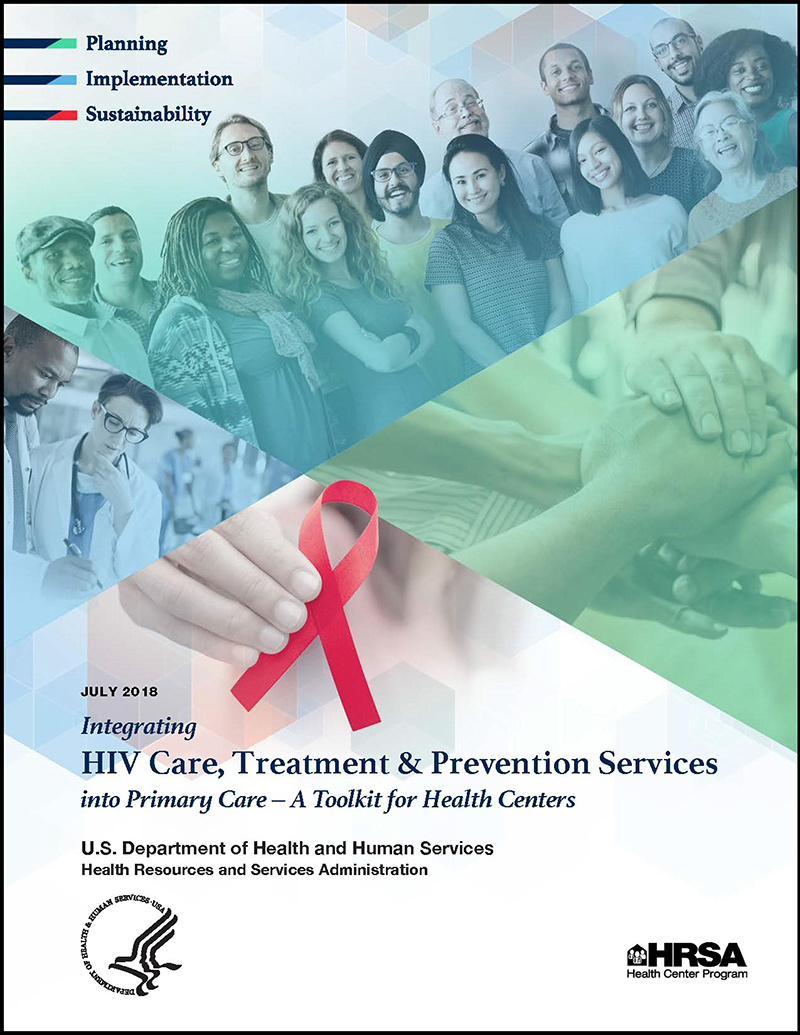New HRSA Toolkit Supports Health Centers in Expanding HIV Services
Topics

A new toolkit for HRSA-funded health centers on how to integrate HIV care, treatment, and/or prevention services into their primary care services shares the lessons learned and resources from 22 health centers that participated in the Partnerships for Care (P4C) demonstration project.
Partnerships for Care Demonstration Project
P4C was a three-year cross-agency demonstration project (2014-2017) to build sustainable partnerships to support expanded HIV service delivery within communities highly affected by HIV, particularly among racial/ethnic minorities. The project was supported with funding from the Secretary’s Minority AIDS Initiative Fund (SMAIF) and the HRSA Health Center Program. The partnerships were developed between 22 HRSA-supported health centers and four CDC-funded state health departments in Florida, Massachusetts, Maryland, and New York. Health centers participating in P4C expanded access to HIV services in their communities and improved HIV outcomes for their patients by integrating routine HIV testing with linkage to care, HIV care and treatment, and HIV prevention into their existing primary care services.
Case Studies, Practical Tools, and More
The new toolkit, which is available on HRSA’s website, features health center resources and promising practices from the P4C project to support the integration of HIV services into primary care, to build strong primary care-public health partnerships, and to expand and enhance HIV services and improve HIV outcomes in communities. The toolkit is organized into three modules based on the stages of developing an integrated primary care HIV program: planning, implementation, and sustainability. In addition, the toolkit discusses cross-cutting integration issues such as cultural competency, data collection and use, quality and process improvement, and training and technical assistance.
P4C grantees also share case studies and vignettes addressing the five P4C focal areas:
- Workforce development
- Infrastructure development
- Service delivery
- Quality improvement and evaluation
- Sustainable partnerships
In addition to tools and resources from the P4C health centers, the toolkit includes resources from CDC, the National Alliance of State and Territorial AIDS Directors (NASTAD), the Ryan White HIV/AIDS Program’s AIDS Education and Training Centers (AETCs) Program, and the University of California, San Francisco.
Health Centers Are a Vital Part of Nation’s Response to HIV
The nation’s nearly 1,400 HRSA-funded health centers operate more than 11,000 service delivery sites in every U.S. state, the District of Columbia, Puerto Rico, the U.S. Virgin Islands, and the Pacific Basin. Over 27 million people – 1 in 12 nationwide – rely on a HRSA-funded health center for affordable, accessible primary health care. The National HIV/AIDS Strategy recognizes the important role that health centers have in expanding the availability of HIV prevention, testing, and care services in communities across the nation. The updated Strategy calls on Federal agencies and health care delivery systems to support the integration of high-quality HIV services into health centers and other primary care settings by providing routine HIV screening, basic HIV care and treatment, referrals for more complex HIV care and treatment, and coordination of care across settings and providers. This new toolkit supports that effort. View other HRSA HIV and primary care resources.
Take a look at the new toolkit [PDF, 11.7MB] and share it with colleagues who may find the valuable lessons and resources useful.